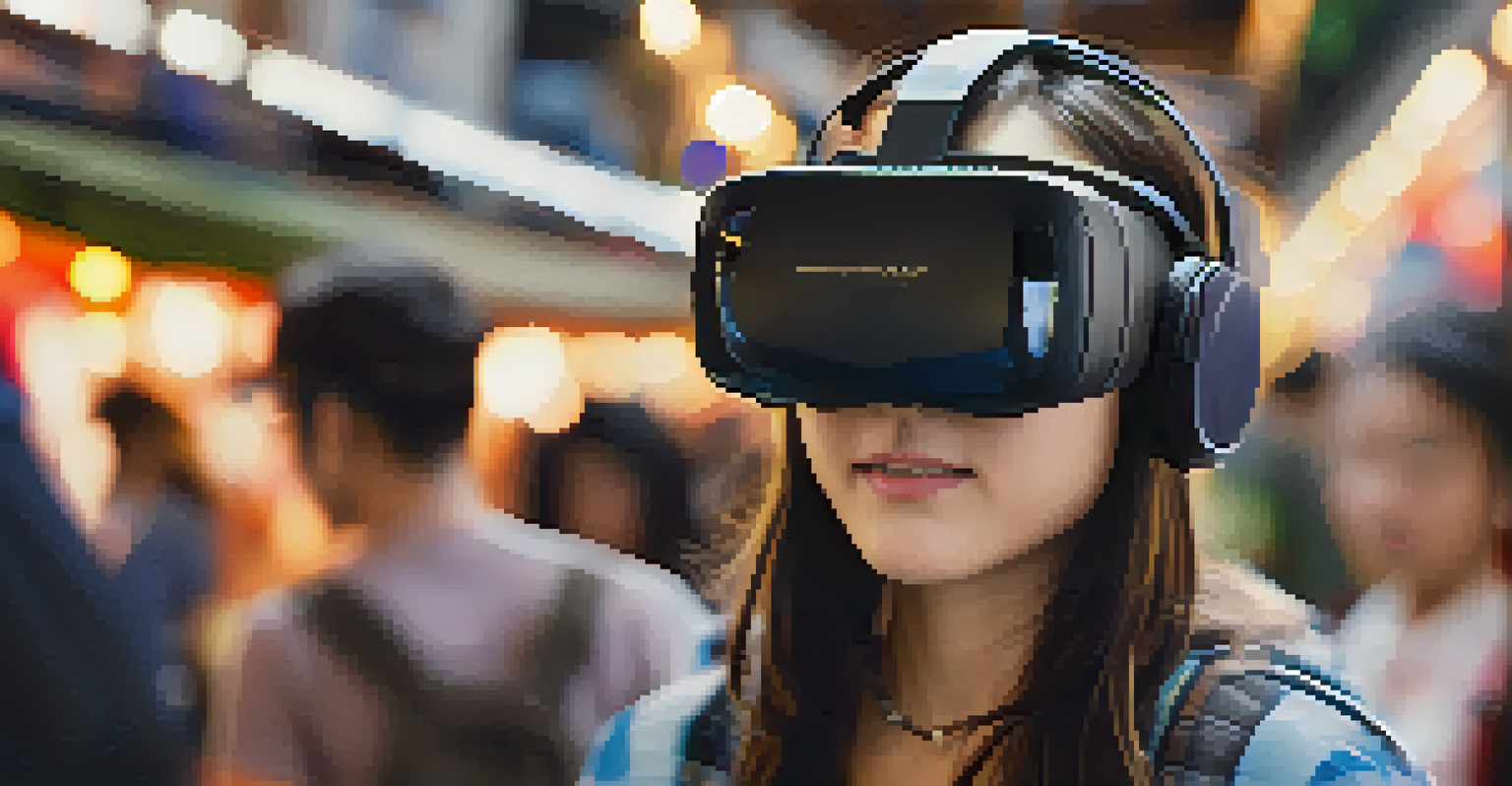Using VR to Teach Cultural Competence in Global Education

Understanding Cultural Competence in Education
Cultural competence refers to the ability to interact effectively with people from different cultures. In education, this means not only recognizing but also valuing diverse perspectives. As global interactions increase, fostering cultural competence in students becomes essential to prepare them for an interconnected world.
Cultural competence is essential for success in a diverse world.
By equipping students with the skills to navigate cultural differences, educators help them become more empathetic and effective communicators. These skills are crucial for future professionals who will work in diverse environments. Thus, cultural competence is not just a nice-to-have; it’s a vital part of modern education.
However, teaching cultural competence can be challenging, especially in traditional classroom settings. This is where innovative approaches, like Virtual Reality (VR), come into play, offering immersive experiences that bring cultural concepts to life.
The Role of VR in Education
Virtual Reality is a technology that creates a simulated environment, allowing users to immerse themselves in different scenarios. In education, VR offers a dynamic way to engage students, making learning more interactive and impactful. By stepping into a virtual world, learners can experience cultures firsthand, rather than just reading about them.

This form of experiential learning can lead to deeper understanding and retention of information. For instance, students can virtually visit a bustling market in Morocco or a traditional festival in India, feeling the vibrancy of these cultures. Such experiences can spark curiosity and foster a genuine interest in global issues.
Cultural Competence is Essential
Fostering cultural competence in students is crucial for their development as empathetic and effective communicators in a diverse world.
Moreover, VR helps break down barriers, allowing students from different backgrounds to share their experiences. This shared learning environment cultivates empathy, as students witness the realities of life in other cultures, promoting a global perspective.
Creating Immersive Cultural Experiences with VR
To effectively use VR in teaching cultural competence, educators need to create meaningful and immersive experiences. This could involve developing VR modules that simulate real-life interactions in various cultural settings. For example, a VR scenario might place students in a negotiation between different cultural representatives, challenging them to consider diverse viewpoints.
Virtual reality is not just a tool; it's a way to experience the world differently.
Educators can also integrate storytelling elements into these VR experiences, allowing students to learn through narratives that highlight cultural nuances. By engaging in situations that require empathy and understanding, students can practice their cultural skills in a safe environment, preparing them for real-world interactions.
Additionally, incorporating local cultural experts or community members into the VR experience can provide authenticity. Their insights can enrich the learning process, offering students a more comprehensive understanding of the culture they are exploring.
The Benefits of VR for Cultural Competence
One of the primary benefits of using VR for teaching cultural competence is the level of engagement it fosters. Students are often more motivated to learn when they can see and experience concepts in action. This heightened engagement can lead to better retention of knowledge and a greater appreciation for cultural diversity.
VR also allows for personalized learning experiences. Students can navigate scenarios at their own pace, reflecting on their reactions and decisions. This self-directed approach encourages critical thinking and self-reflection, essential components of developing cultural competence.
VR Enhances Cultural Learning
Virtual Reality provides immersive experiences that allow students to engage with and understand different cultures firsthand.
Moreover, VR can facilitate discussions about cultural differences and similarities in a way that feels safe and controlled. By interacting with diverse cultures through a virtual lens, students can explore sensitive topics without real-world repercussions, laying the groundwork for more meaningful conversations.
Challenges and Considerations in Using VR
While VR offers exciting opportunities, it also presents challenges that educators must navigate. One significant barrier is the cost and accessibility of VR technology. Schools may face budget constraints that limit their ability to implement VR programs, potentially widening the educational gap.
Additionally, educators must ensure that the content used in VR experiences is accurate and respectful of the cultures being represented. Misrepresentation can lead to stereotypes and misunderstandings, undermining the goal of fostering cultural competence. Therefore, careful selection and development of VR content are crucial.
Training teachers to effectively integrate VR into their curriculum is also essential. Without proper guidance, educators may struggle to leverage the technology to its full potential, missing out on its benefits. Continuous professional development and support can help bridge this gap.
Future Trends in VR and Cultural Education
The future of VR in education looks promising, especially concerning cultural competence. As technology continues to evolve, we can expect more sophisticated and accessible VR experiences tailored for educational purposes. This evolution could lead to a broader adoption of VR across various educational settings, enhancing cultural understanding on a larger scale.
Moreover, advancements in software and hardware will likely make VR more user-friendly and affordable, allowing more schools to integrate it into their teaching methods. As a result, more students will have the opportunity to engage with diverse cultures, fostering a generation that is more culturally aware and sensitive.
Challenges of VR Integration
While VR offers exciting opportunities for education, challenges such as cost, content accuracy, and teacher training must be addressed.
Lastly, we may witness increased collaboration between educators and cultural institutions to create rich, authentic VR content. By partnering with museums, cultural organizations, and local communities, educators can provide students with a deeper and more nuanced understanding of different cultures, ultimately enriching their global education.
Conclusion: Embracing VR for a Global Future
In conclusion, using VR to teach cultural competence is not just an innovative approach; it’s a necessary one in our rapidly globalizing world. By immersing students in diverse cultural experiences, we equip them with the skills needed to thrive in multicultural environments. This immersive learning can lead to empathy, understanding, and ultimately, a more harmonious global community.
As educators and institutions embrace VR technology, the potential to transform global education is immense. By fostering cultural competence through engaging and immersive experiences, we prepare students to face the complexities of the modern world with an open mind and a compassionate heart.

The journey towards cultural competence in education is ongoing, but with tools like VR, we are better equipped to navigate it together. Let’s embrace this technology to cultivate a generation of learners who appreciate diversity and are ready to make a positive impact in the world.